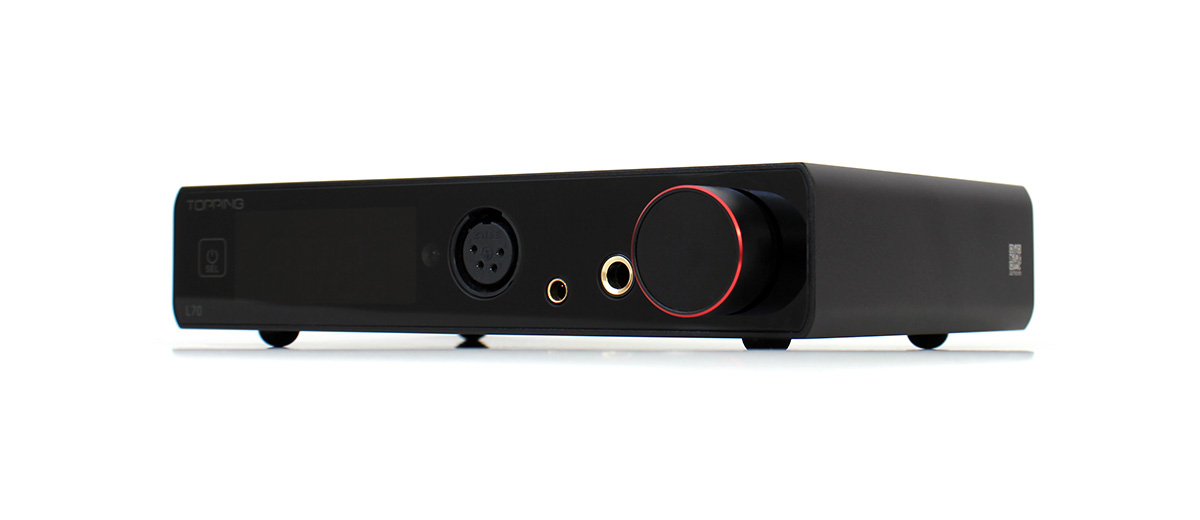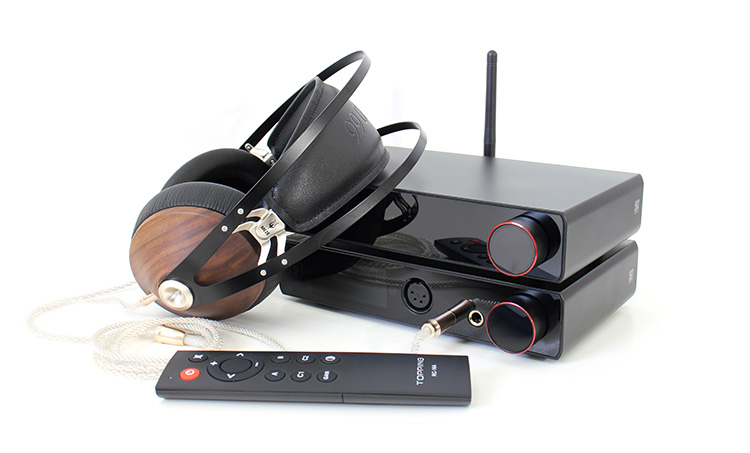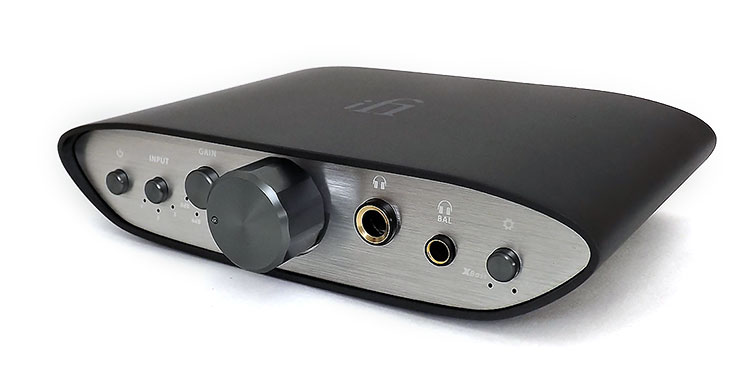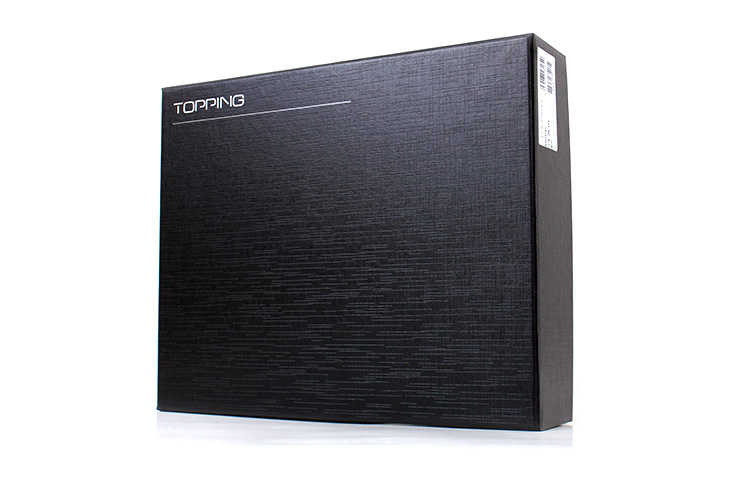Synergy
Pairings
I did prefer to pair the L70 with the E70 over others of course and not only because of the visual balance both units portray while they’re stacked up on my desk. But if you have these two units do yourself a favor and get yourself a short wire with dual male 3.5mm plugs and use that 12-volt trigger feature.
The general operation becomes a one remote control operable setup. You just keep the rear power switches in the on position and power up the amplifier from the remote. The DAC section goes into sleep mode automatically but unfortunately, the L70 amp doesn’t have one it seems.
Using the second-edition Hifiman Arya with the T70 / E70 combo made an excellent combo. The L70 seems to power them well beyond expectation. But one of the great attributes this combo has is the combination of selectable outputs plus the ability to negate an equal volume level for each headphone or IEM connected.
This alongside the use of the low gain control, accommodates the most sensitive IEMs alike and keeps the amp from having a hissy fit. The four gain settings accommodate a wide range of efficiency levels and power ranges and that’s alongside a low resistive output stage.
Power
At 0 gain, the single-ended output can drive my second-generation Hifiman Aryas with plenty of volume headroom to spare enough for two more sets, so imagine on the balanced side. The high gain on the single-ended side also powered my Dekoni Blue set with volume to spare as well.
I don’t think there’s a headphone commercially available that you couldn’t drive with the L70. But at the bottom gain and using the lowest power-producing port, this amplifier doesn’t seem to lose any dynamic energy which is noteworthy. And the upper ranges? Well of course not.
Select Comparisons
Topping A90
Price $499.00
Technical
The A90 is the top-tier Topping headphone amplifier that has a similar array of NFCA modules which is capable of a fraction of a performance increase over the L70.
It is capable of producing a clean, powerful output but is on par with the L70 in that particular aspect since there only seems to be a small 100mW difference in the maximum output rating.
The A90 is a traditional design modernized by the use of an unconventional NFCA module circuitry design that has proven to be worthy of more than just a Hi-Res logo. It is worthy of praise because it produces a good-sounding amp section.
Design
There’s a big contrast in design that took a 180-degree turn because although both the A90 and the L70 have a similar spec sheet and similar tech inside, the outside of the A90 is abundant with mechanical switches, unlike the L70 design which omitted them altogether.
But again, perhaps you prefer the assuring visual cues of the mechanical switches or their reassuring feel. Many consider a smooth volume knob for example to be a desirable feature. Although the smoothness of the volume knob carried over, the L70 took the volume knob to another level.
Performance
If you were to take a so-called blindfold test I bet you would have a hard time distinguishing these two amplifiers. Perhaps there’s a small percentage of improvement in the perceivable soundstage albeit no increase in size perception.
There’s not a large increase in power and other specs that would jump out at you. The differences are most noticeable with precision measuring equipment.
Perhaps there is a slight musical tilt that could be attributed to a slightly darker perceived background made possible by an all-around beefier circuitry design.
It seems the added quality parts do a better job at supplying more power to its internals without raising the noise floor doing so. If my mind remembers well the A90 has a beefier circuitry design with larger capacitors.
Schiit Audio Asgard
$249.00
Technical
This is certainly a thesis and antithesis comparison, simplicity versus high tech, knobs and switches versus a touch panel, and digital volume control.
The tried and true class A amplification with an added Schiit ingredient is another bargain component that performs on par with more expensive components.
This model is what I consider a staple considering the good sound and low-cost which is very competitive in today’s market. That’s aside from the fact that they were built like a tank.
The overall topology is a class A/ AB implementation that runs on class A during low passages but once the volume has risen, its circuitry kicks into class A / B operating mode for an added amount of power. It’s not the most efficient design and runs quite warm at times but it produces where it counts, at ear level.
Design
The Asgard is a heavy piece of equipment made from thick metal and perforated for some passive heat venting. It comes in silver and dark gray color schemes and is very simple in design which uses the most common connectivity.
There’s one headphone output which is a single-ended 6.35mm jack up the front and the rear contains a set of RCA inputs and outputs. The rear output has a fixed output and it facilitates a bypass used to connect a second amplifier.
The Asgard has a 2 way gain switch upfront along with an input selector. However, it only has one input on the rear pane so the switch is mostly used to switch on the optional DAC module if you decide to order one with a built-in DAC. For a few more dollars you could turn the Asgard into a DAC amp combo and a 1 piece desktop solution.
Performance
The Asgard has a familiar class A warmth in its sound signature that does well when you use excessively bright cans and has a musicality aspect due to it having a veer away from an analytically flat response.
It also does well with some sensitive IEMs but I would give the win to the L70 in that category. The Asgard is more at home with full-sized headphones.
One aspect I love about the Schiit Audio Asgard is the wide stage it can produce and, with the right DAC, it produces quite an extraordinary amount of 3D spatial information.
The only aspect I don’t like about the Schiit Audio Asgard is the volume insensitivity which needs to go past the halfway mark to reach what I would consider moderately loud listening levels. But that’s a naturally inherent characteristic of the hybrid amplifier design.
iFi Audio ZEN CAN
$199.00-$299.00
Technical
The iFi Audio ZEN CAN also falls into an antithesis concept and even more so due to the retro style design and fully analog volume knob. The rounded trapezoid is unique to iFi Audio and it’s the only company that offers such a design concept.
The power output capability of the ZEN CAN is not very high comparatively but it’s sufficient enough to satisfy most modern-day power requirement needs. With a rated output of around 1.9 watts, it certainly falls below the others in this comparison but sometimes I feel it’s underrated on paper.
However, the ZEN CAN has a high dynamic range production and there’s plenty to like about the overall sound signature especially if you like tinkering or prefer a bit of color. The ZEN CAN is the only model within this comparison that has features to boost the bass or alter the overall sound.
Not only does it offer Xbass but it also offers a 3d expansion feature. So the two combined add some cool effects if you’re aiming for a meatier and wider sonic presentation and are not worried about obtaining the flattest presentation.
Design
The iFi Audio ZEN CAN Trapezoid shape is somewhat small compared to the other units within this comparison but it still manages to pack a long list of useful features like a 4-stage gain, 3 selectable inputs, plus balanced topology front and back.
The Pentaconn connection is used throughout. The front panel offers up one for a balanced headphone connection and there’s also a balanced high-gain output on the rear panel along with a 3.5mm input with some additional RCA input connections.
The iFi Audio ZEN CAN has another unique aspect and that’s the presently available different flavors. You can buy the original variant with the Xbass and Xspace features but it also comes with internal tuning specifically for the Meze Audio 99 Classics, another for Hifiman cans, and another specifically tuned for the Sennheiser 6XX.
Performance
If you have the mentioned specific cans, the 99 classics, the 6XX, or any Hifiman headphone model that falls within a certain efficiency level then the tuned version of the iFi Audio ZEN CAN will probably give you the best musical experience.
The tuning fixes for example a few peaky areas that the 6XX presents in the upper midrange area. It also adds a touch of needed lower bass presence and it does the same for Hifiman cans when you use the HFM variant.
To conclude, all four amplifiers within this comparison are high-quality pieces of gear that can be recommended wholeheartedly. It’s just a matter of which features are more important to you and what best fits your particular scenario and needs because they all exceed my expectations as far as headphone amplifiers and quality sound.
Our Verdict
The Topping L70 is an A90 disguised within a smaller chassis, with a digital display, and a resistor ladder volume control that has an additional remote control capability but for less money. In other words, you’re getting a lot for a modest investment.
The L70 to me is presently a better buy over the A90 but not over the A90 discrete because of the slight performance gain. Perhaps if you’re the type of person that prefers the old fashion switches then the A90 might be more appealing to you.
But advancements move us forward and the L70 is a step forward since it brings the consumer extremely close to A90 performance but with the benefit of a smaller price tag and still manages on top of that to throw in an even longer list of useful features.
Topping L70 Technical Specifications
- Headphone amp/preamp
- 4-pin XLR + 4.4 balanced + 6.35mm SE outputs
- 8x output mode with volume memory
- NFCA module
- <0.000055% THD+N
- 146 DNR
- <0.3uVrms noise
- <0.1Ω output impedance
- 7500mW x 2 @32Ω / 1150mW x2 @300Ω maximum output power







